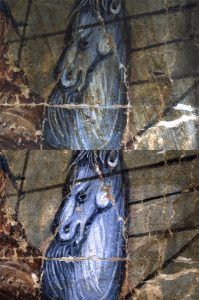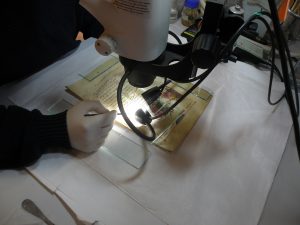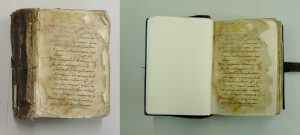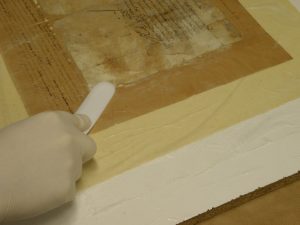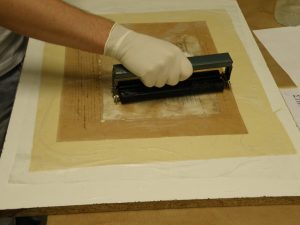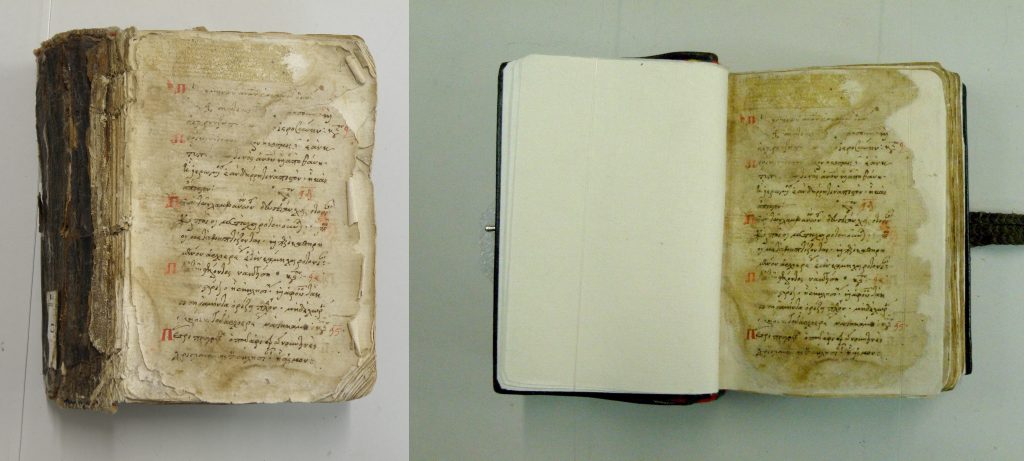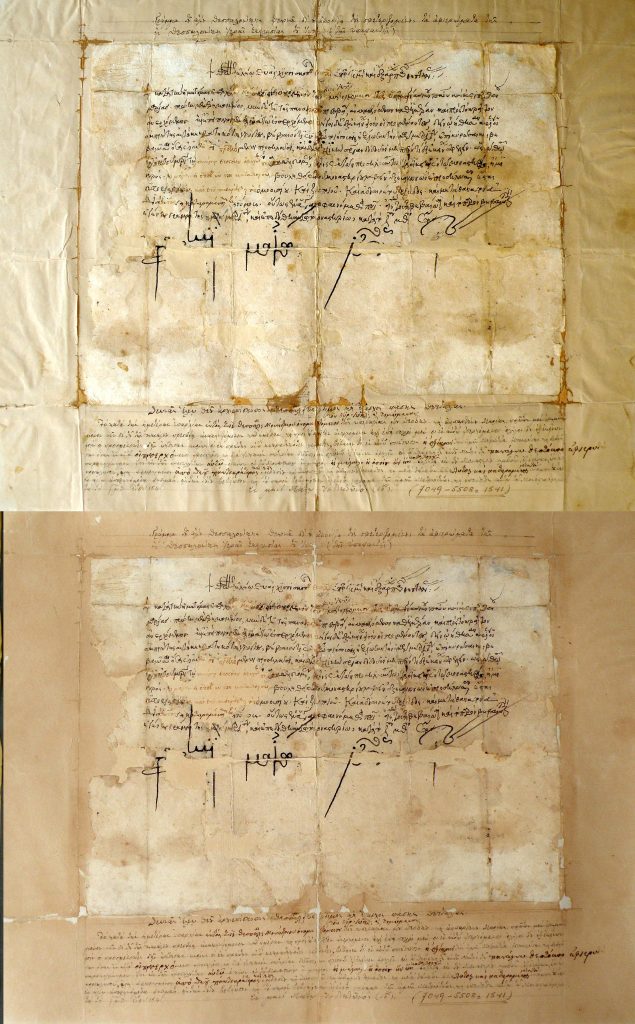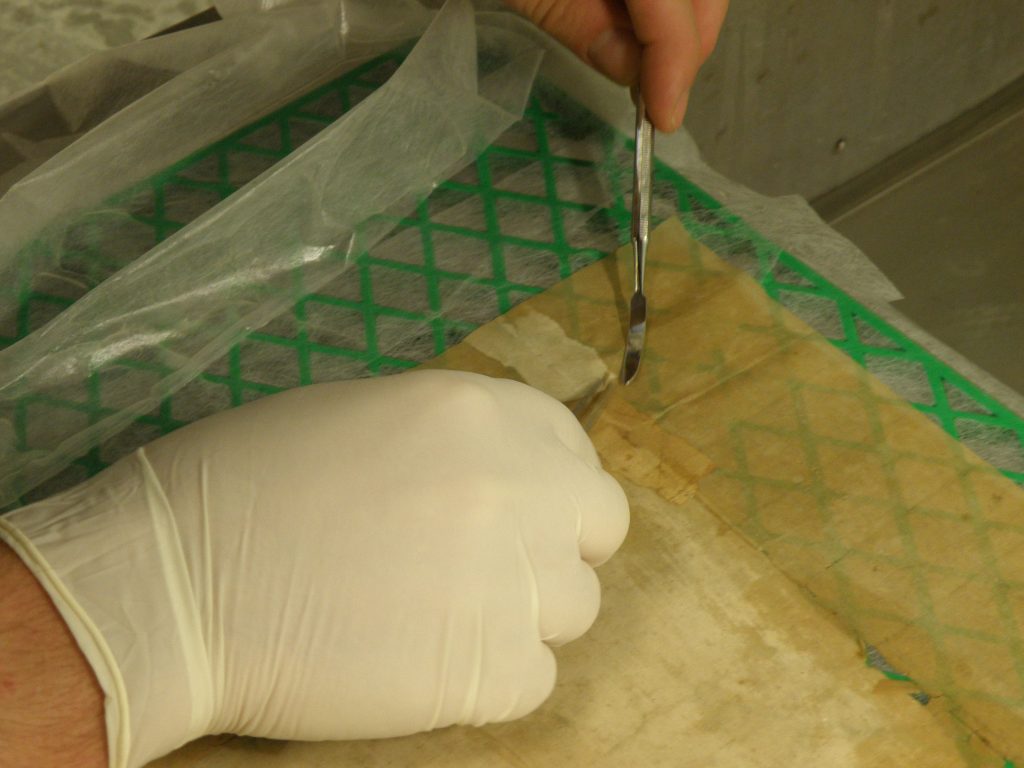Conservation of parchment, paper and loose leaf codices
One of the key areas of responsibility of the Ephorate of Antiquities of Chalkidiki and Mount Athos is the conservation of parchment or paper manuscripts as well as printed and loose leaf codices. From 1982 to the present, the Ephorate has planned and implemented many missions relating to the recording, research, documentation, study and conservation of papyrus and parchment artifacts, lavishly illuminated at times. Our field of action is either the monasteries on Mount Athos when onsite work is possible, or the fully equipped and staffed Paper and Parchment Conservation Laboratory of our Ephorate, which is one of the few laboratories in the particular field in Greece.
The conservation of paper and parchment artifacts is a very demanding task that requires specialized knowledge. The age of the artifacts and their everyday use have often caused damage: sometimes it is irreversible, as in the case of the loss of part of the body of a book due to tearing, and there are cases where damage is restored, as is the case of deposits of dust, wax, grease, the removal of foreign matter due to poor conservation with the use of novel materials (sticky tapes, stitches, animal glues, etc.), shrinkage of parchment due to fluctuating humidity levels, oxidation of ink, presence of mould, restoration by filling cracks and holes caused by wood-boring insects or rodents, etc.
Initially, the missions and conservation works were of a rescue and precursory nature, in order to ensure the effective preservation of the archival material in the Athonite Libraries and Archives (e.g. stabilization of humidity levels, dust containment, exclusion of wood-boring insects and rodents, etc.). Later, in 2003, an integrated two-volume study entitled “Mount Athos Manuscript Conservation Study” was drawn up and approved by the Ministry of Culture and since then, our actions have been based on it in close cooperation with the librarians and archivists of the monasteries.
The vast quantity of paper and parchment material on Mount Athos (more than fifteen thousand volumes and some hundreds of thousands of loose leaf codices from the Byzantine and post-Byzantine period) constitutes the work of the Ephorate a Sisyphean task. It is, therefore, necessary to apply strict scientific criteria for conservation selection. The state of preservation is fundamental, yet we need not fail to take account of the historical, archaeological and palaeographic value of each written artifact. Lastly, priorities of a different nature are established in cases of an urgent need for an exhibition international in scope, such as the exhibition “Treasures of Mount Athos”, which was hosted at the Museum of Byzantine Culture in Thessaloniki when Thessaloniki was selected as the European Capital of Culture in 1997, on the occasion of which dozens of codices and documents were preserved, or the exhibition “Le Mont Athos et l’Empire byzantin. Trésors de la Sainte Montagne” in 2009, hosted at the Petit Palais, in Paris.


